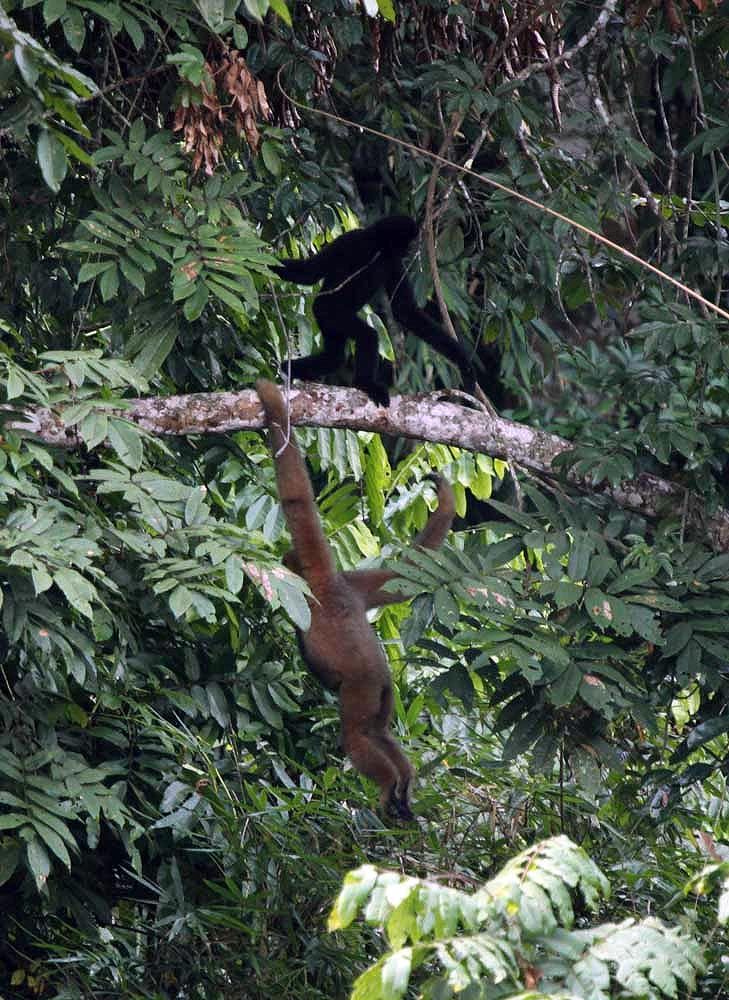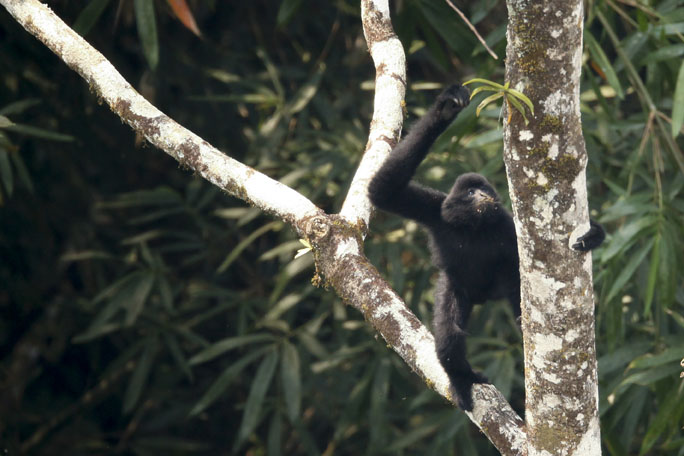
Geography & Habitat
Nomascus concolor is found in southwestern China (Yunnan), northwestern Laos and northern Vietnam. Black Crested Gibbons live in evergreen, semi-evergreen and deciduous forests of subtropical and mountainous areas up to 2700 m asl.
The global population of the species totals about 1,500 individuals only. Here at the Gibbon Experience we can observe the subspecies Laotian Black Crested gibbon (N. concolor lu) which can only be found in Laos.
The population in the Nam Kan NPA is thought to be the only viable population outside Yunnan. The southern area surrounding The Gibbon Experience currently hosts 11 distinct groups.
Appearance & Characteristics
Black Crested gibbons are not monkeys but apes. Males are all black with black hairless faces while females are yellowish-beige with black hairless faces and black patches on the top of their head, chest and abdomen.
Both females and males generally weigh between 7 and 10 kg. Gibbons have the longest arm length relative to body size of all primates.
Gibbon arms are about twice the length of their body and one and a half times the length of their legs. With a speed of 56 km/h a gibbon brachiates (moves by swinging) faster than any man can run !
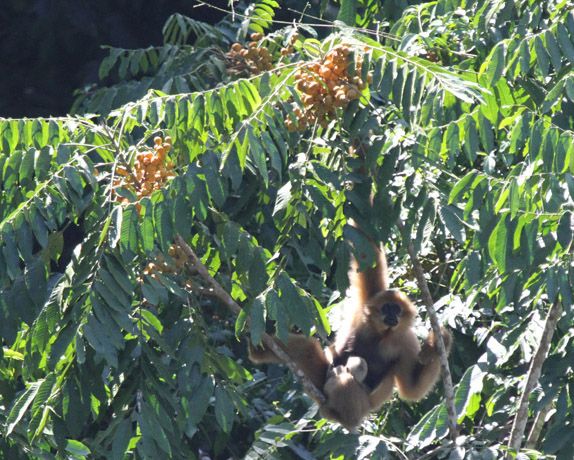
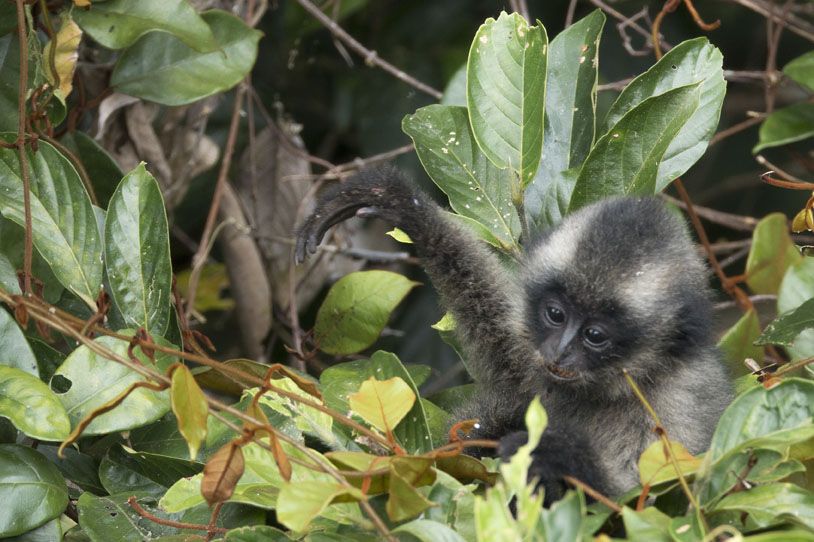
Ecology
Black Crested gibbons live in small family groups composed of an adult male and female and up to 5 offspring. A gibbon family moves within its home range everyday in search of a new food sources.
Although most Black Crested Gibbons are monogamous, there have been occasional observations of multiple females in a single breeding group. While the Alpha can be male or female.
These observations have created some debate about the existence of polygyny among males. Huang Bei et al. recently published evidence of males and females replacing existing mating pairs. Gibbons have a low birth rate with usually only one offspring born at a time, spaced out by periods of 2-3 years. Gestation lasts about 7-8 months. Offspring of Black Crested Gibbons are born with white fur.
During the first months, the infant clings to his mother’s belly while she swings around the canopy. The infant’s fur color, regardless of gender, begins to slowly turn from white to grey to end up fully black at around 1 year old.
The mother nurses the infant until the age of 2, a time during which the male and older offspring also provide infant care. Juvenile fur color remains black and only changes once reaching sexual maturity at the age of 7 or 8. It is therefore impossible to distinguish the sex of subadults from coloration.
Reaching sexual maturity, females change from black to a yellowish-beige color and both males and females leave their natal family groups. Crested gibbons have been estimated to have a 30 to 40 year lifespan. Gibbons are almost completely arboreal. As their Latin name Hylobates, “dweller in the trees”, indicates, they spend most of their time in the tall trees of the canopy. Nomascus concolor is diurnal and sleep in tall, thick trees near a food source.
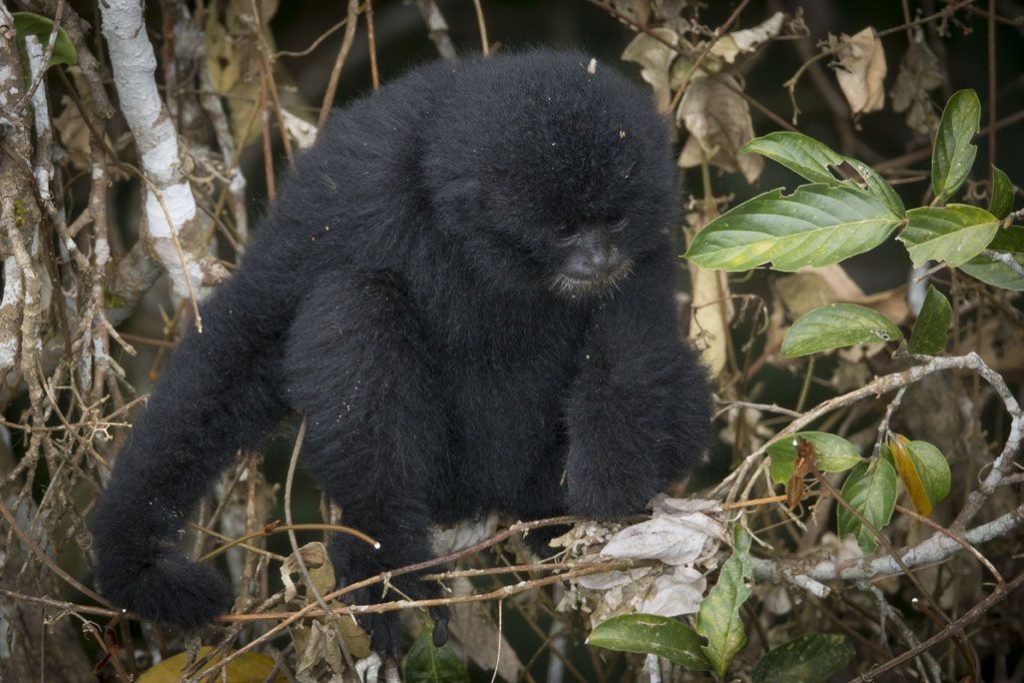
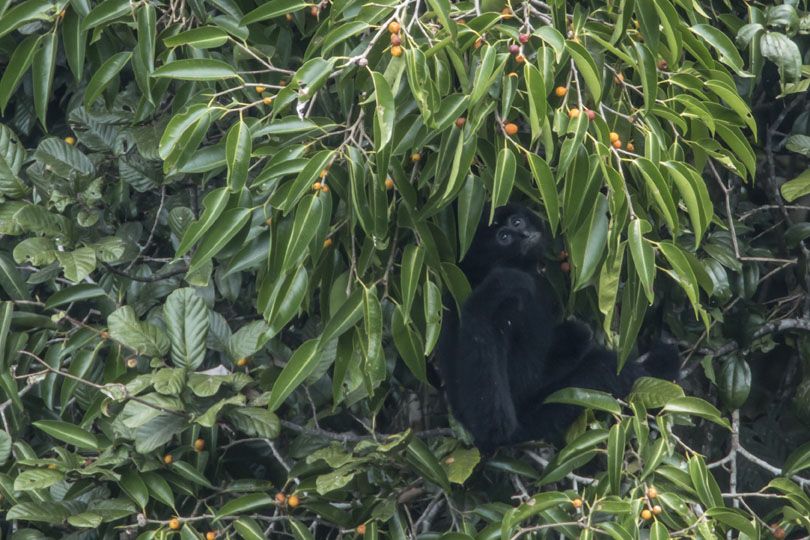
Although they may eat buds, leaves, bark, flowers, small vertebrates, insects, and eggs, the majority of their diet is composed of sugar rich fruits such as figs. They move from tree to tree by an arboreal form of locomotion called brachiation, in which gibbons swing from branch to branch only using their long arms to support their body weight.
Only a few other apes and monkeys have adapted this unique form of movement. Gibbons are masters at brachiation reaching airborne distances of 15 m (50ft) and going as fast as 56 km/h (35mph). Gibbons communicate mainly through vocalizations, but also with physical interactions and facial expressions.
Gibbons have a complex language (close range hoo calls) which discovery (2015) revolutionized what we thought of the origin of the human language. Gibbons can for example, communicate what type of predator is approaching, how close the threat is and if it is moving or standing in one spot.
They are known for their distinctive loud complex siren-like vocalizations. Songs can commonly be heard at dawn; however, season and weather seem to influence the timing, frequency and duration of singing.
Elaborate vocalizations are used for a variety of purposes including the strengthening of a pair bond, attracting a mate, and establishing family territory. In the mornings before feeding, songs can be heard from either a solo gibbon or a female and male pair performing a duet.
These songs are produced from the top of the trees with individual notes and very elaborate patterns. The unique notes in the songs allow researchers to distinguish sexes and different species of Crested Gibbons. Each subspecies and even each family have their own vocal patterns and notes !
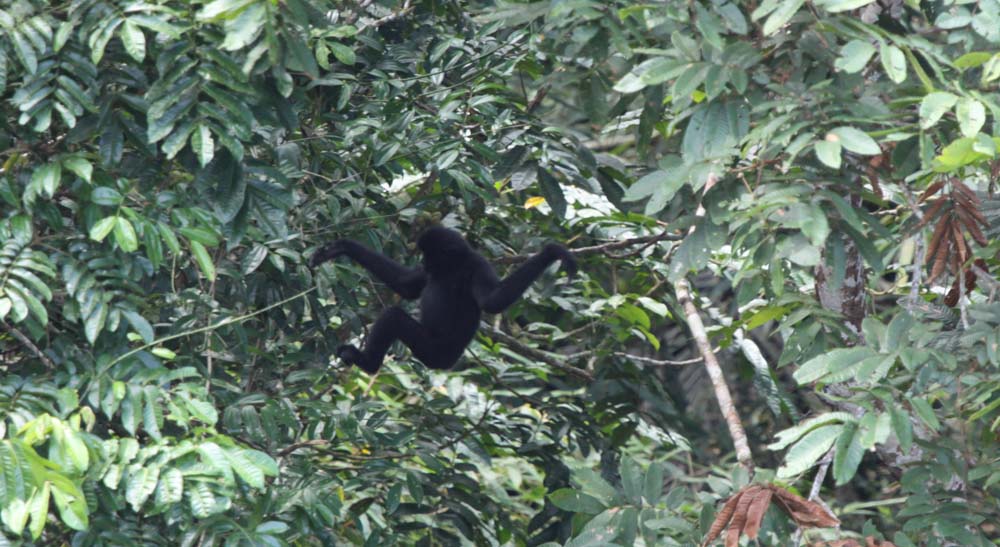
Status : Western Black Crested Gibbons were categorized on the 2015 IUCN Red list as critically endangered.
